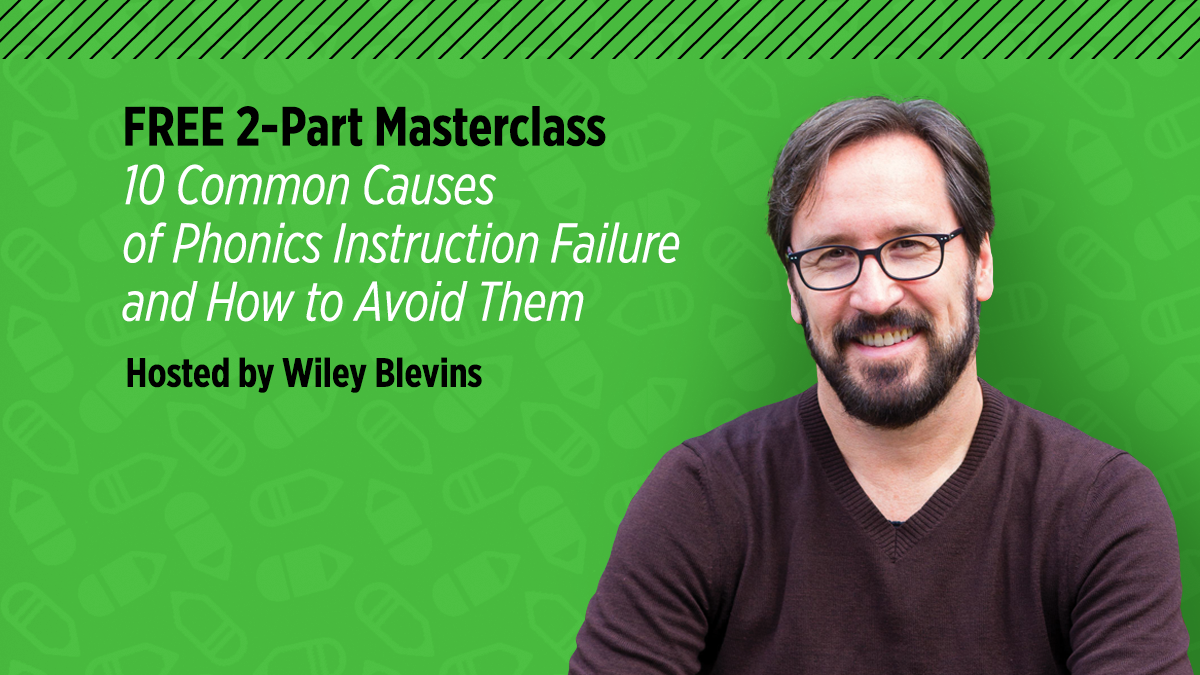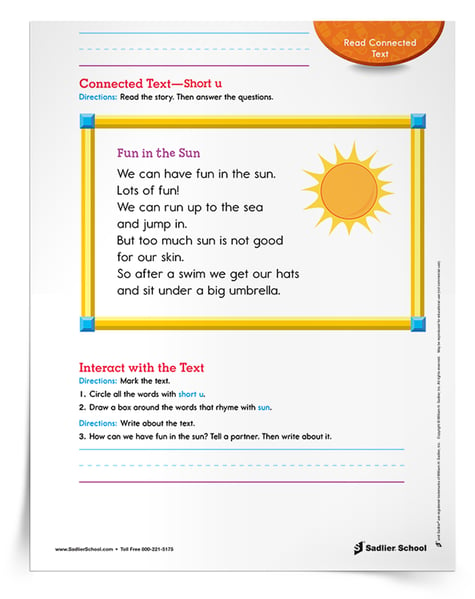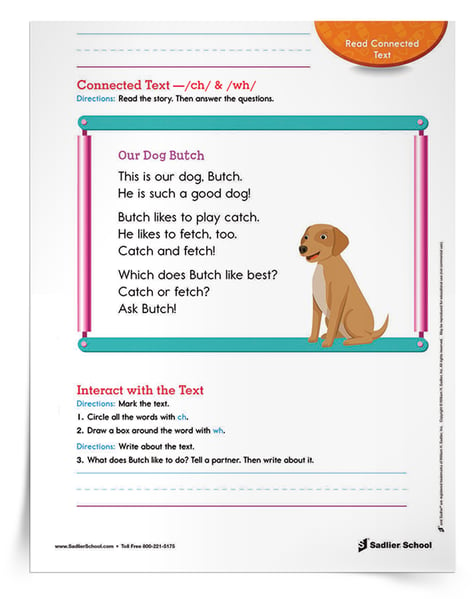May 1, 2019 ELA PD - Literacy, ELA K-5, ELA Focus - Reading, ELA Resources - Activities, ELA PD - Leadership, ELA PD - Other
Wiley Blevins’s 10 Common Causes of Phonics Instruction Failure, Part I
By: Emily Niska
If I wasn’t already a believer in the importance of strong phonics instruction, I certainly am now. After attending two sessions with renowned phonics expert, Wiley Blevins, I’m champing at the bit to revamp my entire phonics curriculum! I recently signed up for Wiley Blevin’s 2-Part Phonics Masterclass: 10 Common Causes of Phonics Instruction Failure and How to Avoid Them, and after only two hours, Wiley had me convinced: I must do everything I can to avoid “the perfect storm of failure!”
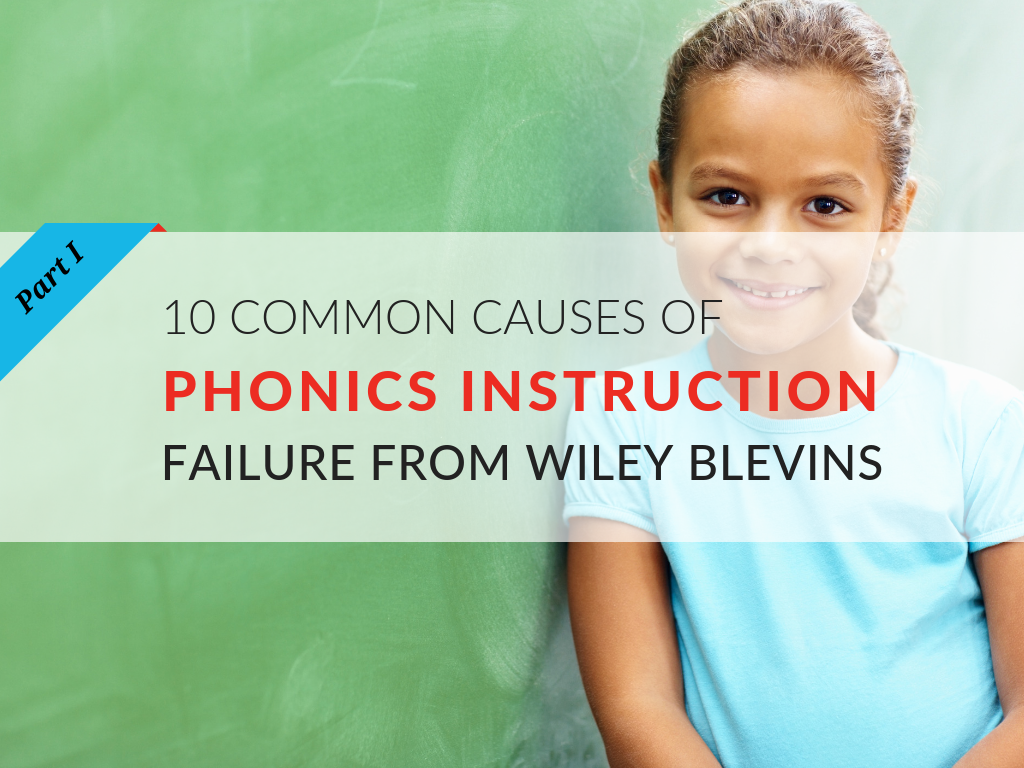
To do Wiley Blevins’ research findings justice, I’ve decided to break the 10 common causes of phonics instruction failure into two parts. In this article, I’m going over the first five common causes of phonics instruction failure and in Part II, I will identify the last five common causes.
I’m so excited to share with you what I learned from the class, including how to
- identify your own phonics instruction failures (It’s okay—we all make mistakes!!)
- how you can make the necessary corrections to improve your instruction and materials
- maximize instructional time in order to increase student learning outcomes
Why Phonics Instruction Matters!
Phonics is the foundation upon which all reading skills rest. Yes, it’s that important, folks, so we’ve got to get it right. A solid foundation of phonemic awareness is necessary for a plethora of reasons.
✓Students need to have both phonemic awareness and alphabet recognition if they are to decode words properly.
✓Students must be able to decode words quickly and accurately in order to develop word recognition and fluency skills.
✓Knowledge of letter sounds is necessary for students to be able to spell words or to use them in their writing.
✓Early success in reading is important in developing students’ confidence, thereby increasing their motivation/excitement for reading.
✓Kids must develop strong decoding muscles, so that later, when the reading tasks become more complex, they can devote their mental energy to reading comprehension and not to sounding out words.
✓Teaching phonics gives students access to sounding out 84% of written words in the English Language.
There’s a lot at stake here, when it comes to the importance of sound phonics instruction for all kids. Therefore, we need to make sure that
- teachers are trained properly
- instruction is being delivered effectively (meaning that instructional time is allotted in the proper places and the focus is on transfer to real reading and writing rather than isolated skill work)
- reading material allows students to apply their decoding skills in authentic ways
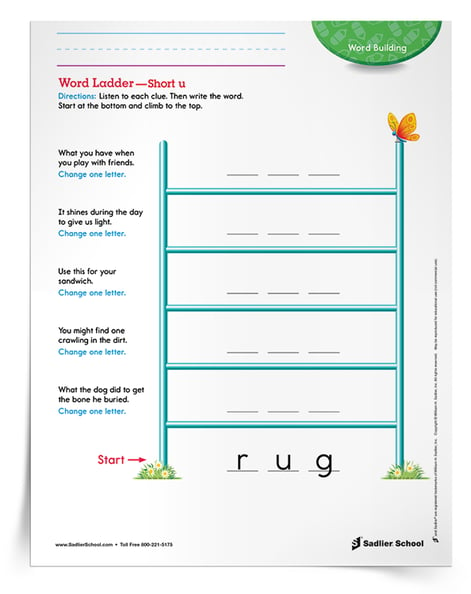
Wiley Blevins’s First Five Common Causes of Phonics Instruction Failure
#1 Inadequate or Non-Existent Review and Repetition Cycle
Wiley’s first point really hit home for me. With the increasing depth and breadth of state standards, teachers are in a time crunch (to the say the least). I can’t tell you how many teachers I know that have expressed the same anxiety. The fear of not hitting every objective drives us to race through concepts day after day just to get through the huge amount of content laid at our feet. When it comes down to it, we’re not taking the time we should to review and repeat past skills. But Blevins makes it very clear that that the goal of phonics instruction should be mastery rather than simple exposure.
Take a minute to reflect on your own phonics instruction. Ask yourself these two questions.
- Are you teaching to exposure or to mastery?
- Are you skipping from one skill to the next in a mad race to get through them all before those dreaded standardized tests roll around in the spring?
It’s time to rethink what we’re looking for in terms of our students’ learning outcomes. As Blevins comments, we need to shift our mindset from “one and done,” to it’s “one and just begun.” If your curriculum doesn’t offer opportunities for review and repetition, then you need to take some time to build it in. What does that look like exactly?
- Once you introduce a phonics skill, you must give students ample opportunities to practice and apply the skill over the next 4–6 weeks
- Add review words to decoding work, like dictation/spelling words and blending word lists
- Do daily warm-ups with taught sound-spellings
- Reread decodable stories from previous weeks with partners
- Check out Blevins’s masterclass on-demand to learn more
#2 Lack of Application to Real Reading and Writing Experiences
Simply put, teachers are spending too much time on direct phonics instruction and not enough time letting students apply their skills while reading and writing. We’ve all been there at some point or another, right? I can’t tell you how many times I looked at the clock and realized that I had used up more than half of my instructional minutes talking AT my students instead of letting them do the heavy conceptual lifting!
Have a sneaking suspicion that this is happening in your classroom? Take a look at the way you’re dividing up your time during your phonics lesson. Ask yourself, how many of your valuable instructional minutes did you use for instruction and how many for application?
If you spent more than half of your lesson being a “sage on the stage” and less than half sitting back and letting your students apply their newly-acquired knowledge, then you’ve got a problem. (Don’t worry, there’s a fix for that!)
In order to make sure that your students have adequate time for processing, make sure that you are
- using at least half of your phonics instructional minutes lesson for application
- including reading and writing as a daily part of phonics instruction through activities such as
- Reading decodable texts
- Dictation
- Follow-up writing activities (such as sentence frames or writing a story extension)
#3 Inappropriate Reading Materials to Practice Skills
One of the biggest complaints I hear from teachers when it comes to phonics instruction is that there is a lack of good decodable texts. It’s so frustrating to teach a phonics skill and then turn to the “matching” story, only to find that students are a being tasked with reading sounds and letters they haven’t yet learned. When there’s a huge mismatch between the skills being taught and the texts students are reading, it can cause kids to shut down and dislike reading.
If you’re faced with a similar problem or you find that your students are struggling through their decodable texts despite a sound, well-paced phonics lesson, then it’s time to reexamine your associated reading lesson. Students should be reading texts that are accessible and that require them to apply only the phonics skills that they’ve already learned. This will ensure that they develop confidence in decoding, which will then spur a love for reading.
If you can (or you’re in charge of the curriculum), seek out texts that are truly accountable, meaning they are
- Instructive
- Comprehensible
- Engaging
If that is not possible, create your own accountable sentences using
- Words with phonics skills that are both new and review
- Sight words
- Content from that week’s readings
#4 Ineffective Use of the Gradual Release Model
Most of us know the tried-and-true gradual release model (I do/we do/you do). But so many teachers spend way too much time on the “I do” and way too little time releasing. Students (not their teachers) should be using their skills to discover how words are connected and the way they work.
Time a moment to ask yourself
- Who is doing all the work during my phonics lessons?
- Who is doing the “heavy lifting” in terms of making the conceptual mental connections?
If the answer to either of those questions is “I am,” then you’re spending too much time modeling for your students and doing the thinking for them. If you’re struggling with this same issue, try some of Blevins’s tips. Include more activities that are active, engaging, and thought-provoking, such as word ladders, word sorts, and word building with a blending focus.
#5 Too Much Time Lost During Transition
I’m sure so many of you can relate—we waste much too much time distributing and collecting materials.
If you’re spending more than five minutes of a 30-minute lesson on transition-related activities, then take some time to examine how you can rescue valuable instructional minutes from being eaten up by transitions. Wiley Blevins suggests pre-planning phonics review skills that don’t require materials, such as an ABC song you could sing while walking across the room.
In Summary
Doing what’s best for our students means giving them the tools they need to be independent, fluent readers. With that goal in mind, we must examine our phonics instruction failures and (with Wiley Blevins’s help) find ways to correct them.



